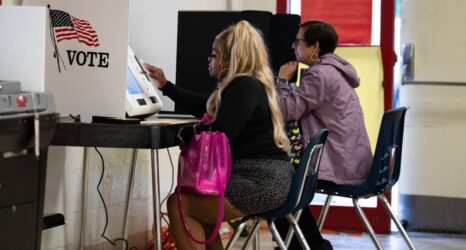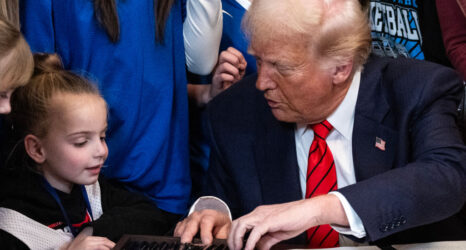Reprinted with permission from American Association of University Women
It’s official: Election season has begun. With an estimated 10 million viewers representing 16 percent of U.S. TV-owning households, the first primetime presidential debate of the 2016 election season was the most-watched primary debate in history. But there was one huge omission: women.
The absence of women on stage comes on the heels of new research showing that the percentage of women running for Congress has plateaued. Despite historic gains, women still make up less than 20 percent of Congress. Today, many states have yet to elect a woman governor or woman Senator. Women of color are especially scarce in elected leadership, representing less than 5 percent of the 535 members of the House and Senate. Only two women of color, Mazie Hirono and Carol Moseley Braun, have ever served in the Senate.
Research shows that stereotypes and gender bias are largely to blame for keeping women out of leadership positions. Women are routinely slighted when it comes to leadership at all levels, with one poll finding that respondents prefer to have a male boss over a female one. According to a new Harvard study, even mothers and girls had more confidence in student councils led by boys rather than by girls. Gender stereotypes affect not only how women leaders are perceived, but also how women and girls come to perceive their own leadership capabilities. It’s no surprise that women must be asked to run for office not once, not twice, but seven times.
In addition to thwarting gender stereotypes and sexism, a key step to closing the political leadership gap is to actively engage girls and young women in politics early in life, especially around student government. In fact, 56 percent of women in the current U.S. Congress started their leadership careers in student government. AAUW works with Running Start to train the next generation of Shirley Chisholms, Olympia Snowes and Tammy Baldwins through Elect Her, a program to help college women tackle the long-standing gender gap in political leadership.
For the 2016 presidential election, women are running not just in the Democratic and Republican races, but in a third party as well. But women are still far from achieving political parity. The first presidential primary debate made it clear that the political leadership gender gap is everybody’s loss. Absent from the discussion were issues like equal pay, child care, sexual assault and minimum wage, all of which disproportionately affect women and especially women of color. How can our government represent everyone’s point of view, let alone come up with the best ideas and solutions, if only half the voices are heard?
“I want young women to understand that the field is wide open,” said equal-pay advocate Lilly Ledbetter at AAUW’s 2015 National Convention. For women, entering that field is “not the easy thing to do, but it’s the right thing to do.” By encouraging more women to run for office, we can ensure that women have a voice in the halls of power, from the student union to the state legislature to the White House.
Photo via Fox News on Twitter





